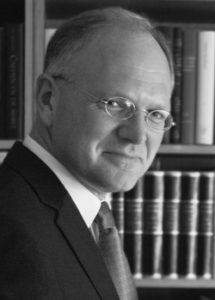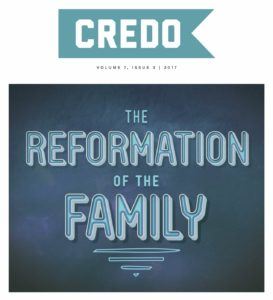In your new “spiritual biography” of Martin Luther, one of your chapters describes Luther the “Father.” Many biographies focus on the controversial events of Martin’s life, but you have helped readers understand Luther the man as well, taking us into his home. Tell us, what kind of father was Luther?
There is nothing extraordinary about Luther as father, except for the fact that he was one. He broke with his vow of celibacy, married a woman who had done the same and the two even had children. It was shocking to the church, but a joy and relief for many. Luther was away from home quite a bit, but kept in written contact with his children and these letters demonstrate his love for his children as well as his concern for their spiritual well-being. Just as most fathers he had to deal with problems of health and of school results. In letters in which he writes about these issues we see how much of a father Luther was.
Did any of Martin’s children die, and what was his reaction?
Luther and Katharina first lost their eight-month-old daughter Elizabeth. That was in 1528, three years after their marriage. After her death Luther wrote: “My little daughter Elizabeth has passed away. I am so overwhelmed with sadness, that she has left me behind with a somewhat motherly heart. Before this, I would never have believed that the heart of a father could become so tender when it concerns his own child.” In 1542 another daughter passed away. Magdelena was thirteen when she became seriously ill. During her illness Luther did what he could to comfort her. Luther knew what was coming and wrote, “My daughter Magdalena is almost at the point of death, and shortly she will go to her true Father in heaven, if God hasn’t decided differently.” And an eyewitness wrote, “When Magdalena lay close to death, and wanted to die, her father fell on his knees by her bed. He wept bitterly, and prayed if God would release her. Then she died resting in the hands of her father.”
Many have acknowledged that Martin Luther “revolutionized” marriage. What was so different about Luther’s view of marriage from the medieval view he was raised to assume and believe?
The official view of the church was that marriage was inferior to celibacy. The real believer could do without marriage, that is without sexual intercourse and without having to spend time on daily family issues. Marriage was thus for the weaker ones. Luther turned this view totally upside down because he demonstrated that the view of the church had no basis in Scripture at all. Quite the opposite, he said, the Bible praises the married life and so should we. Luther’s tracts on marriage were in his days an eye-opener and not only to many monks and nuns. And with all the discussions we have today about marriage and sexuality, we would do well to read Luther on this again as he takes us in a fine way to a scriptural viewpoint.
How did the marriage of Martin and Katharina come about?
The story of how Luther and his wife got together is remarkable to say the least. Luther helped thirteen nuns to escape from their monastery. Once in Wittenberg he found husbands for twelve of them but got stuck with one called Katharina von Bora. She rejected the candidates Luther presented to her. In the end, she suggested that Luther should marry her. So she proposed to him! Luther was not interested in getting married. Besides, he knew that Katharine was quite an independent and outspoken lady. However, he gave in as he was criticized since he told monks and nuns to marry but did not do so himself. So he accepted Katharina’s proposal and they married. The love between the two came after the wedding.
How would you describe the marriage of Martin and Katharina? How did their marriage mature in the midst of the unpredictable turn of events in Martin’s career?
Martin and Katharina experienced tough times with little income, a growing family, a very big house as they lived in the monastery, and a huge number of guests to take care of either permanently or temporarily. Besides there were illnesses, and Luther was especially susceptible given the stress of work, threats, and criticisms. Despite all this, joy, devotion, and humor characterized their relationship. Luther was a great reformer but a complete chaotic when it came to organization. Katharina proved to be the perfect manager, went into business to make money, and kept Luther straight when needed. Luther was concerned about Katharina’s lack of Bible reading, Katharina was concerned about Luther’s lack of control drinking beer. They were a great couple and for no other reason than that they both lived intensely in faith and trust in God.
Many may not know that Martin Luther loved music. Could music be heard from the Luther house as the family gathered together? And was Martin’s music sung in German churches?
“I love music,” Luther said, and those around him experienced that as we still do today. Already as a teenager Luther played music to make some extra money. There was music in Luther’s house as he sang and played instruments together with his children. More importantly, Luther reintroduced singing in the church. The congregation was taught to sing and praise God. Luther himself wrote some beautiful hymns and encouraged and inspired many others to do the same. You can say that there is no Bach without Luther, but it is all the more true that without Luther churches would be filled with silence and the praise to God would be just as empty.


